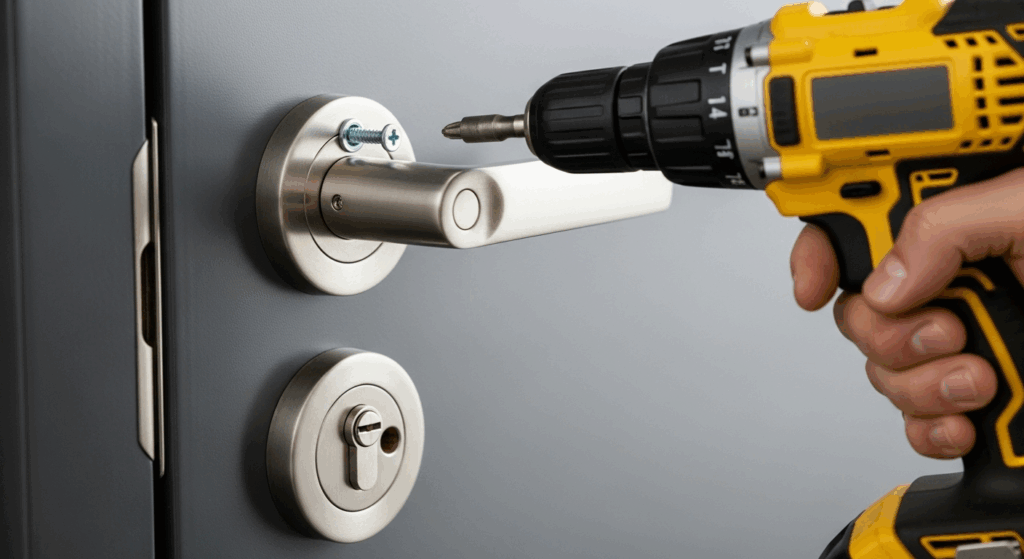Lorem ipsum dolor sit amet, consectetur adipiscing elit. Ut elit tellus, luctus nec ullamcorper mattis, pulvinar dapibus leo.
How to Secure a Vacation Home from Break-Ins
A vacation home should feel like a sanctuary—not a worry list. Because second properties sit empty for long stretches, they’re tempting targets for opportunists and vulnerable to slow-burn issues like weather, leaks, and deferred maintenance. With a layered plan that blends sturdy hardware, visibility cues, smart tech, and trustworthy local help, you can harden your home, deter intrusions, and respond fast if something goes wrong.
The winning formula: visible deterrence + strong doors/windows + intelligent lighting/sensors + neighbor or caretaker routines. Small, repeatable habits beat complex, fragile systems every time.
Core Principles for Second-Home Security
A break-in deterrent plan for a vacation home differs from a primary residence in three key ways: longer gaps between visits, fewer spur-of-the-moment checks, and more public online signals about your travel. That means your defenses must be predictable for you but unpredictable to others, and they must fail gracefully if Wi-Fi or power blips. Build in layers: Shell hardening (doors, locks, windows), presence simulation (lighting, sound, exterior cues), detection (cameras, sensors), and response (neighbors, security patrols, remote controls). Then add resilience—local schedules that work without cloud service—and documentation—photos, serial numbers, and insurance details ready for claims.Make Forced Entry Loud & Slow
Doors, Locks, Windows, and Garages
You can’t stop every attempt, but you can make intrusion noisy, time-consuming, and risky. Strength here buys precious minutes for detection and response.Deadbolts & Strikes
Use a Grade 1 deadbolt with a 1″ throw and a reinforced strike anchored by 3″ screws into framing—not just the jamb. Add a wrap-around door reinforcer if the latch area is worn. On rental-heavy areas, consider restricted keyways to block unauthorized key copies.Solid Doors & Hinges
Exterior doors should be solid core or metal-skin. If hinges face outward, install security studs or hinge bolts so removing pins won’t free the door. Tighten hinge screws each season to keep the door aligned and the deadbolt throwing smoothly.Smart + Mechanical Redundancy
Pair a keypad/smart lock with a keyed override stored in a shrouded outdoor lockbox anchored to masonry (not on the knob). Codes enable caretaker access without sharing physical keys; rotate after each visit.Patio Sliders & French Doors
Add auxiliary pins or foot locks that block lift-and-slide attacks. Consider a secondary surface bolt on the passive leaf of French doors, plus a keyed lock with a reinforced strike at handle height.Windows & Glass
Apply laminated safety film or use laminated/impact-rated glazing in storm zones. Lock latches, add inconspicuous sash pins, and keep shrubbery trimmed to eliminate hiding spots. Basement and bath windows benefit from interior bars or decorative grills anchored into framing.Garage & Service Doors
Treat the garage like a main entry. Disable emergency pull-cord fishing vulnerabilities, add a side-door deadbolt with reinforced strike, and keep a motion light over the service door. Don’t leave remotes in visible vehicles.Look Lived-In
Lighting, Sound, and Exterior Cues
An empty house advertises itself: dark windows, piled flyers, quiet driveways. Create believable, low-effort signals that someone could be around.Randomized Light Scenes
Use smart bulbs or timer plugs with local schedules and random offsets (±15–45 minutes). Rotate two or three rooms (living, hallway, bedroom) on varying evenings; keep normal sleep-dark hours to avoid “stage lighting.”Curtains & Shadow Play
Leave shades in their usual positions and aim lamps at walls so light looks indirect. A TV-simulator lamp for 45–90 minutes on some nights adds convincing color shifts.Exterior Routine Cues
Arrange for bins to move on pickup day, lawn or snow service to run as scheduled, and package holds/lockers for deliveries. Ask a neighbor to sweep flyers and door tags promptly.Vehicles & Driveway
If feasible, have a neighbor occasionally park in your driveway. A small change in exterior “set dressing” signals occupancy better than any gadget.See Problems Early
Cameras, Alarms, and Local Backups
Detection is only useful if it notifies the right person and prompts action. Keep alerts meaningful, not overwhelming.Focused Cameras
Aim at approaches (drive, porch, side gate), not the entire yard. Set zones to filter street motion. Use wired or PoE where possible, or strong Wi-Fi with a mini-UPS so cameras record during brief outages.Door/Window Sensors
Pair magnet sensors with an audible alarm or monitored system. In quiet areas, a siren that trips on forced entry adds pressure for intruders to flee quickly.Smart Locks & Audit Trails
Time-bound codes for cleaners and caretakers create an access log. If a code is used at odd hours, you’ll know—and can rotate it instantly.Neighbor or Caretaker Escalation
Share a limited camera view and a guest lock code with one trusted person. Define when they should check the property (alarm, power loss, storm) and how they’ll contact you and authorities.Coastal, Mountain, and Rental Markets
Adapting Security to Your Environment
Geography and usage patterns change your risk profile. Tailor hardware and routines to local realities.Coastal Humidity
Choose corrosion-resistant finishes and gasketed smart locks. Use dry-film lubricants, not oils that trap salt. Schedule battery changes before peak humidity.Freeze/Thaw Cycles
Moving door frames cause latch misalignment. Install oversized strikes, reinforce screws into framing, and check the deadbolt throw at the start and end of each season.Short-Term Rentals
Use unique guest codes per stay with automatic expiry. Keep an owner-only code and rotate staff codes quarterly. Document key access; avoid hiding spares outdoors.Storm & Power Reliability
Favor devices with local schedules and hub memory. Add a small UPS to your router and smart hub to preserve scenes and locks during brief outages.Access Without Exposure
Key Management, Rekeying, and Vendor Policies
Your lock is only as secure as your key control. For a home that sees cleaners, contractors, and guests, access standards matter as much as hardware.Restricted Keyways
Ask your locksmith for keys that can’t be duplicated at retail kiosks. Track who holds which key, and rekey after staff turnover.Vendor Check-In
Require texted arrival/departure photos and use a temporary code during the service window only. Revoke immediately if schedules change.Lockbox Best Practices
Use a shrouded, weather-rated box anchored to masonry or steel. Keep it out of direct street view and rotate codes after every use.Seasonal Rekey
If multiple vendors or guests used keys/codes in a season, plan an annual rekey to reset control and refresh worn cylinders.Limit Damage • Boost Recovery
Inside Measures that Reduce Loss
If someone gains entry, you can still limit impact and increase the odds of recovery and insurance success.Room-Level Locks
Use keyed or privacy locks on an owner’s closet and a small interior safe anchored to studs. Keep passports and spare fobs there, not in bedside drawers.Covert Asset Marking
Record serial numbers and add microdot/UV marks on electronics and tools. Photograph items in situ and store in cloud notes for quick claims.Minimal Temptation
Don’t stage expensive electronics near windows. Use cable locks on TVs/monitors and tuck small electronics out of sight between visits.Smart Water & Smoke
Water-leak sensors and shutoff valves, plus interconnected smoke/CO detectors with remote alerts, prevent small incidents from becoming disasters while you’re away.Quiet Online
Social Posts, Listings, and Digital Footprints
Don’t undermine your setup with public hints that your place is empty. Assume posts and listing calendars are part of an intruder’s research.Delay Trip Sharing
Post travel highlights after you return. Avoid real-time geotags and exterior shots that reveal a vacant driveway.Private Calendars
For rentals, keep owner stays and cleaning schedules off public calendars. Share specifics only with vetted vendors via secure apps.MFA on Smart-Home Accounts
Enable multi-factor authentication and limit admin accounts. Use guest permissions with expiration dates for caretakers.Document Access Changes
When codes/keys change, note the date, who received access, and why. This creates an audit trail if something goes missing.Avoid These Pitfalls
What Makes Vacation Homes Easy Targets
Fixing these five issues yields big security gains without big spend.Old, Loose Strikes
Short screws into the jamb fail quickly. Replace with 3″ screws into framing and a heavy-duty strike.All-Night Lighting
Glare screams “empty.” Use warm interior scenes on random timers plus motion floods outside.Fake Rocks & Doormat Keys
These are first checks for intruders. Use a shrouded lockbox with rotating codes or code-only access.Visible Deliveries
Door tags and boxes stack up. Pause or reroute packages; ask neighbors to sweep the porch.Cloud-Only Automations
When Wi-Fi drops, your lights shouldn’t. Choose devices with local schedules and memory.Three Quick Checklists
Copy these to your notes app so you can reuse them every trip.- Before the Season Rekey or rotate codes • Inspect door/hinge screws & strikes • Test sliders’ aux locks • Service cameras and replace batteries • Verify local schedules on lights • Update vendor list and neighbor contacts • Photograph valuables and serials.
- Day You Leave Run randomized evening scene • Arm alarm and verify notifications • Move bins accordingly • Pause mail/packages • Stow small electronics • Confirm lockbox code & caretaker instructions • Close/lock all windows including baths/garage.
- While Away Rotate one light scene weekly • Review camera digests (not every alert) • Confirm lawn/snow service • Have neighbor do a curbside glance • After any vendor visit, rotate codes.
FAQ
Common Questions About Securing Vacation Homes
Quick answers to help you prioritize upgrades that matter most.What’s the single biggest upgrade for break-in resistance?
Reinforced strikes with 3″ screws into framing, paired with a Grade 1 deadbolt, deliver huge gains for little cost.
Smart lock or traditional deadbolt?
Both. Use a smart lock for flexible access plus a keyed override stored in a shrouded lockbox. Redundancy beats failure modes.
Do cameras really deter?
Visible cameras with motion lights deter many opportunists. They also preserve evidence—just keep notifications sane so you don’t ignore them.
How often should I rekey?
At least annually if vendors/guests change, and immediately after any lost key or suspected compromise.

